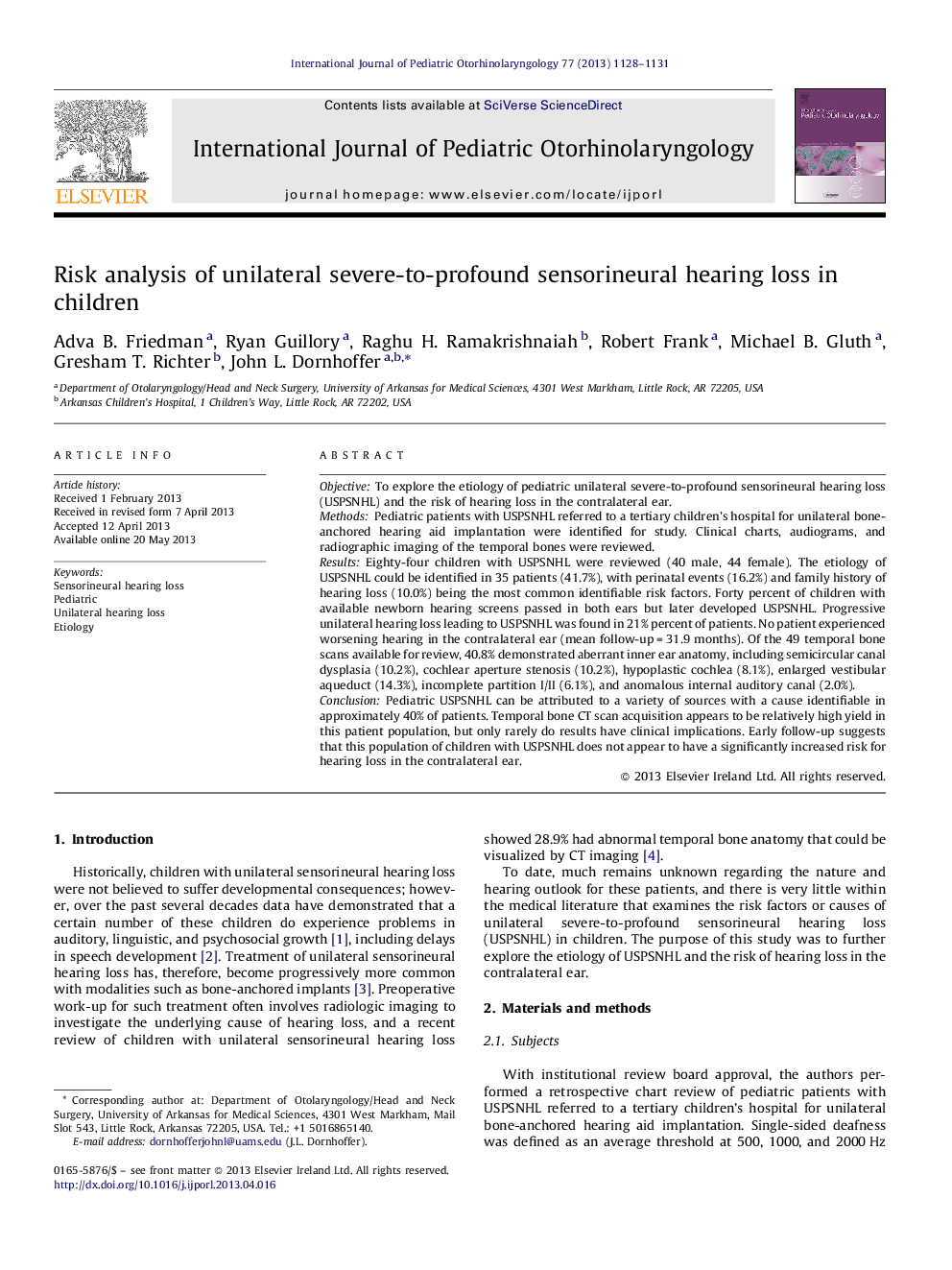| Article ID | Journal | Published Year | Pages | File Type |
|---|---|---|---|---|
| 4112399 | International Journal of Pediatric Otorhinolaryngology | 2013 | 4 Pages |
ObjectiveTo explore the etiology of pediatric unilateral severe-to-profound sensorineural hearing loss (USPSNHL) and the risk of hearing loss in the contralateral ear.MethodsPediatric patients with USPSNHL referred to a tertiary children's hospital for unilateral bone-anchored hearing aid implantation were identified for study. Clinical charts, audiograms, and radiographic imaging of the temporal bones were reviewed.ResultsEighty-four children with USPSNHL were reviewed (40 male, 44 female). The etiology of USPSNHL could be identified in 35 patients (41.7%), with perinatal events (16.2%) and family history of hearing loss (10.0%) being the most common identifiable risk factors. Forty percent of children with available newborn hearing screens passed in both ears but later developed USPSNHL. Progressive unilateral hearing loss leading to USPSNHL was found in 21% percent of patients. No patient experienced worsening hearing in the contralateral ear (mean follow-up = 31.9 months). Of the 49 temporal bone scans available for review, 40.8% demonstrated aberrant inner ear anatomy, including semicircular canal dysplasia (10.2%), cochlear aperture stenosis (10.2%), hypoplastic cochlea (8.1%), enlarged vestibular aqueduct (14.3%), incomplete partition I/II (6.1%), and anomalous internal auditory canal (2.0%).ConclusionPediatric USPSNHL can be attributed to a variety of sources with a cause identifiable in approximately 40% of patients. Temporal bone CT scan acquisition appears to be relatively high yield in this patient population, but only rarely do results have clinical implications. Early follow-up suggests that this population of children with USPSNHL does not appear to have a significantly increased risk for hearing loss in the contralateral ear.
